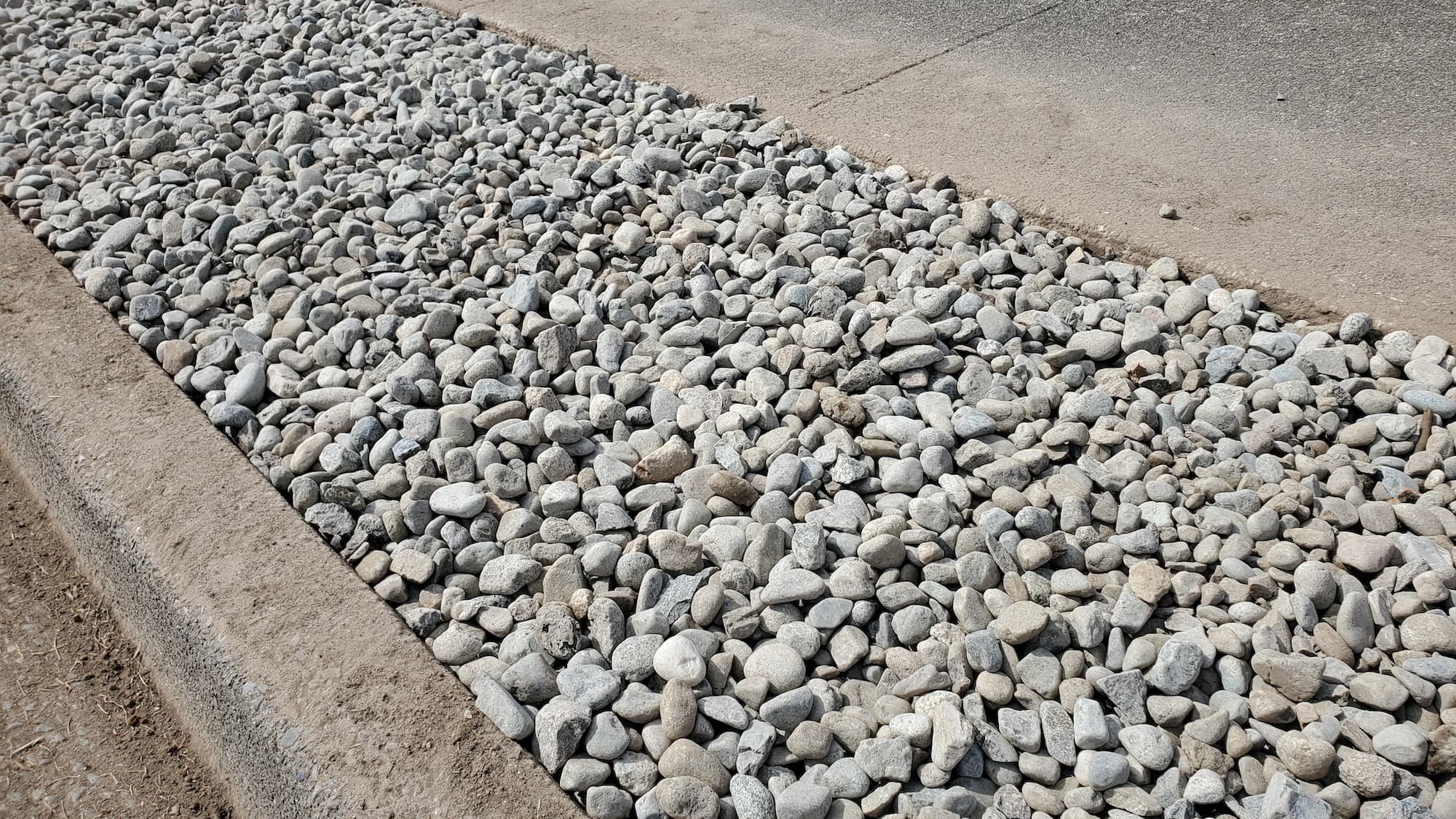West Seattle Decomposed Granite Path
Homeowner’s Issue
West Seattle yards are a mix of steep lots, clayey glacial soils, heavy winter rain, and pockets of deep shade from maples and evergreens. Many properties near Alki, Hamilton Viewpoint, or Lincoln Park struggle with mossy lawns, compacted walkways, and seasonal puddling where water funnels down streets and driveways. Our thin topsoils and acidic conditions favor moss, salal, and opportunistic weeds rather than turf. Summer water restrictions and Seattle’s wet winters mean homeowners need surfaces that drain, won’t rut into mud, and hold up without daily care.
Decomposed granite (DG) is a practical choice here: it’s permeable, blends with the natural neighborhood look, and compacts into a firm, non-slip surface that breathes. But DG installed wrong will wash out on slopes, encourage edge creep, or allow weeds to return. We prioritize sustainable prep — mechanical excavation, crushed-steel base, proper edging, and compacting — combined with no-herbicide weed control (manual removal, organic suppressants, and mulch). That approach reduces maintenance, respects HOA curb standards, and keeps runoff managed on narrow West Seattle lots.
Our Quality Service
We install compacted DG paths built for local conditions. Services use:
- Plate compactors, crushed-rock base, hand tools, and steel or recycled plastic edging.
- Sustainable prep: no herbicides, only manual/organic weed control and biodegradable fabric where needed.
- Drainage solutions for slopes: shallow swales, crushed-rock backfill, and cross-slope grading.
Typical timeline:
- Small path (up to 100 sq ft): 1 day.
- Medium/complex path or slope work: 1–3 days.
- Large or terraced jobs: plan multiple days plus staging.
Benefits: safer footing in wet weather, lower maintenance than bark or bark chips, improved curb appeal for buyers and HOAs, and longer-lasting results when installed with proper base and edging.
What’s Included
- Site assessment and layout plan (we document grades and drainage).
- Vegetation clearing and manual weed removal (no herbicides).
- Excavation of surface to depth required for base and DG.
- Crushed rock base for drainage and stability.
- Optional biodegradable landscape fabric (for highly weedy sites).
- Decomposed granite spread and compaction to specified thickness.
- Steel or recycled plastic edging installation.
- Final grading, clean-up, and haul-away of green waste or debris.
Options / Upgrades
- Mulch buffer or native-plant edging (sword fern, sedum, Oregon grape).
- Extra drainage rock or French drain tie-in for steep run-off areas.
- Haul-away vs. municipal green-bin drop (we can sort and haul).
- Organic weed-control top dressing and seasonal tune-ups.
Before & After / Expectations
What to expect during work:
- Noise from a plate compactor and trucks; expect a day of heavy activity for small jobs.
- Access requirement: at least a 3–4 ft clear path for wheelbarrows; nearby parking for a truck helps speed the job.
- Debris: we separate green waste and haul what you approve; municipal green-bin options available.
After installation:
- The surface will firm up immediately but may settle slightly over 2–4 weeks—minor top-ups are normal.
- In very wet weather avoid heavy foot traffic until compaction dries a bit.
- No herbicides used: we recommend hand-pulling early and organic mulch or fabric where necessary.
Care tips for West Seattle
- First month: lightly water new DG only if a dry spell occurs to help compaction; otherwise rain does the work.
- Spring and fall: pull seedlings before they root; these seasons are peak weed pressure.
- Reduce moss by opening canopy where possible, improving sun and airflow, and keeping edges free of leaf litter.
FAQs (4)
Q: Will DG wash away on my slope near Fauntleroy?
A: If we install proper edging, crushed-rock base, and grade breakers, DG holds well. On steep runs we add terraces or rock checks.Q: Do you use herbicides to control weeds?
A: No. We rely on manual removal, organic top-dressings, mulch, and proper base prep to reduce weed recurrence.Q: How long before I can walk on the new path?
A: Light foot traffic same day after compaction; heavy loads or wheelbarrows best after a few days once settled.Q: Do I need permits or HOA approval?
A: Most DG paths don’t need city permits, but check HOA covenants. We provide simple drawings/photos for HOA review on request.
Call to Action
Ready for a durable, low-maintenance path that suits West Seattle hills and rainy winters? We schedule local jobs quickly and give firm, written estimates. Book a free on-site or photo-based estimate and get a straightforward plan that respects HOA lines and water rules. Email neatandtidyseattle@gmail.com to get started — we work near Alki, Lincoln Park, and surrounding West Seattle neighborhoods.










